#learn data science 2025
Explore tagged Tumblr posts
Text
Future-proof your career by mastering the most in-demand skill of the decade—data science. As industries across the globe rely more on data to drive decisions, professionals equipped with data skills are leading the change. Whether you're aiming for a career shift, better opportunities, or job security, now is the perfect time to invest in yourself. Discover how a Data Science Training Course In Chennai can help you stay ahead with real-world tools, hands-on projects, and expert mentorship. Don’t wait—step into a data-powered future today.

View On WordPress
#artificial intelligence#career in data science#Data Analytics#data science#data science career#data science certification#data science for professionals#data science jobs#data science online course#data science opportunities#data science skills#data science training#data scientist#data-driven career#future of data science#how to become a data scientist#importance of data science#learn data science#learn data science 2025#machine learning#python for data science#tech career upgrade#trending tech skills#upskilling in data science#why learn data science
0 notes
Text
one of the things you will not hear commonly on the internet is that it is like. fine to be an athiest and also a pagan or whatever. like learning about blavatsky et al & finding materialism did change how i relate to my practices a Lot. a lot. and i do think we have a responsibility to for example understand the history and mechanisms of orientalism, etc, bc these 'outside of organized religion' religious practices have an ugly and exploitative history and we have to look at that if we are to salvage anything meaningful from the project of paganism. i mean this to you so sincerely. if you think of yourself as a witch this post is for you. i lived there for ten years i'm not throwing stones from outside the house here
but last night i lit my candles on my little altar to death and it's like. what she means to me has changed as i come to understand the world. i think she's the progressive force, in truth. i am trying to love the world enough to see it for true
but the other other interesting thing to me is that. seeing the world more clearly doesn't change what i'm getting out of the experience very much. and i guess i thought it would.
i think if we were to dismantle the systems of power wherein religion is used for control (and believe me, paganism is not exempt from these pressures due to it's largely decentralized nature), that religion might just be like. dance. like you can get fancy with it or not but it moves you because it moves You. like it may one day just be a kind of art
anyway. the gods don't have to speak to you. in truth i don't think they are speaking to anybody because i don't think they are real. and if you're looking at paganism or 'witchery' or whatever and wanting to start or expand your practice. i am telling you directly that you don't have to use it to escape from the world. it is so tempting to find some magical system to simplify your model of the world but you don't actually have to use this to hide. it can be the place you love the world enough to see it for true. or love yourself enough to see what you need. take the parts that work and discard the parts that don't & remember you need some chemicals to cast fireball in real life.
#pagan#paganism#witchcraft#witchy#in truth. if you like magical systems people historically have had a whole bunch and i do think those are interesting#i just think like 2025 we can say that one branch of magic turned into materials science and if you want to cast fireball in real life#you gotta learn from those guys. not the crystals can heal your bones guys. right#data driven approaches. and like truly it's not like i'm less batshit religious now it's just way more oblique to where i was when i starte#when i decided i would not be christian anymore as i was raised to be but i needed something. something#and ten years in i am looking at u and saying. i think there are things valuable here that we could salvage from this wreck#but in order to do that we have to see the world for true. and i am trying. i am trying
3 notes
·
View notes
Text
Data Science Careers: What You Need to Successfully Know Now in 2025
In a world where data is the new oil, data science remains one of the most lucrative, future-proof, and dynamic careers in tech. But in 2025, the landscape has evolved: artificial intelligence has become mainstream, tools are more automated, and expectations for data professionals have shifted. If you’re considering entering or growing in the field, this guide explains exactly what you need to…
#AI in data science#data portfolio tips#data science careers 2025#machine learning jobs 2025#Python data science skills
0 notes
Text
Data Analytics with AI in 2025: Trends, Impact & What’s Next
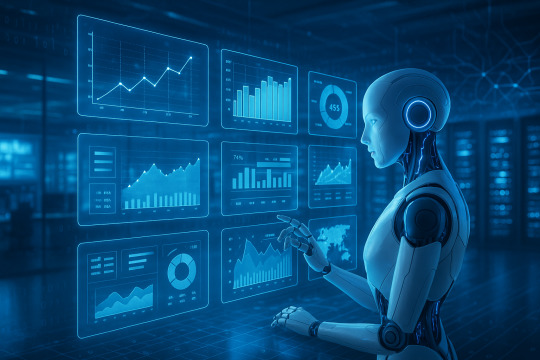
As we move deeper into 2025, the fusion of Artificial Intelligence (AI) and data analytics has become more than a competitive edge—it's a business necessity. Companies that once viewed AI as experimental are now embedding it into the core of their operations, using it to transform raw data into real-time insights, accurate forecasts, and automated decisions.
In this post, we’ll explore how AI-powered data analytics is evolving in 2025, what trends are shaping the future, and how your organization can harness its full potential.
What Is AI-Driven Data Analytics?
AI-driven data analytics uses intelligent algorithms—such as machine learning (ML), deep learning, and natural language processing—to discover hidden patterns, predict future trends, and automate insights from vast and complex datasets.
Unlike traditional analytics, AI doesn’t just report on what happened; it explains why it happened and suggests what to do next—with unprecedented speed and precision.
Key Trends in 2025
1. Real-Time AI Analytics
Thanks to edge computing and faster cloud processing, AI analytics is now happening in real time. Businesses can react to customer behavior, supply chain issues, and financial trends instantly.
2. AI + Business Intelligence Platforms
Modern BI tools like Tableau, Power BI, and Looker now offer built-in AI features—from auto-generated visual insights to natural language queries (e.g., “Why did sales drop in Q1?”).
3. Predictive + Prescriptive Analytics
AI doesn’t just forecast future outcomes—it now recommends specific actions. For instance, AI can predict customer churn and suggest retention campaigns tailored to individual users.
4. Natural Language Insights
Non-technical users can now interact with data using plain English. Think: “Show me the top 5 products by revenue in the last 90 days.”
5. Ethical AI and Data Governance
With growing concerns about bias and data privacy, 2025 emphasizes explainable AI and strong data governance policies to ensure compliance and transparency.
Use Cases by Industry
Retail & E-commerce: Personalized shopping experiences, dynamic pricing, demand forecasting
Finance: Fraud detection, credit risk analysis, algorithmic trading
Healthcare: Diagnostic analytics, patient risk prediction, treatment optimization
Manufacturing: Predictive maintenance, quality control, supply chain optimization
Marketing: Customer segmentation, sentiment analysis, campaign optimization
Benefits of AI in Data Analytics
Faster Insights: Analyze billions of data points in seconds
Smarter Forecasting: Anticipate trends with high accuracy
Cost Reduction: Automate repetitive analysis and reporting
Enhanced Decision-Making: Make strategic choices based on real-time, AI-enhanced insights
Personalization at Scale: Serve your customers better with hyper-relevant experiences
Challenges to Watch
Data Quality: AI requires clean, consistent, and well-labeled data
Talent Gap: Skilled AI/ML professionals are still in high demand
Ethics & Bias: AI models must be monitored to avoid reinforcing social or business biases
Integration Complexity: Aligning AI tools with legacy systems takes planning and expertise
What’s Next for AI & Analytics?
By late 2025 and beyond, expect:
More autonomous analytics platforms that self-learn and self-correct
Increased use of generative AI to automatically create dashboards, summaries, and even business strategies
Tighter integration between IoT, AI, and analytics for industries like smart cities, healthcare, and logistics
Final Thoughts
In 2025, AI in data analytics is no longer just a tool—it's a strategic partner. Whether you're optimizing operations, enhancing customer experiences, or driving innovation, AI analytics gives you the insights you need to lead with confidence.
📩 Ready to transform your data into business intelligence? Contact us to learn how our AI-powered analytics solutions can help you stay ahead in 2025 and beyond.
#Data Analytics#Artificial Intelligence#AI in Business#Business Intelligence#Predictive Analytics#Big Data#Machine Learning#Data Science#Real-Time Analytics#AI Trends 2025
0 notes
Text
Top 10 Data Science Tools You Should Learn in 2025
Best Tools for Data Science are evolving fast, and if you want to stay ahead in 2025, it’s time to upgrade your toolkit. Whether you’re just starting out or already deep into data projects, using the right tools can make your work smoother, smarter, and a lot more fun. With powerful no-code platforms, AI-driven automation, and cloud-based collaboration, the Future of Data Science Tools is all about speed and simplicity. So, whether you’re brushing up your skills or diving into new ones, these Must-Have Tools for Data Scientists are your ticket to staying competitive this year.

1. Python — Still the King of the Jungle
If you haven’t started with Python yet, 2025 is your cue. It’s powerful, readable, and has libraries for nearly everything. Tools like Pandas, NumPy, and Scikit-learn make it your go-to for analytics, modeling, and more. Python is basically the heartbeat of the Best Tools for Data Science ecosystem — and yes, that’s the first mention (just four to go!).
2. R — For the Love of Stats and Visuals
R is like that friend who’s always great with numbers and loves making beautiful plots. It’s perfect for statistical analysis and data visualization. Plus, if you’re into research or academic work, R might just be your best buddy. In the world of Popular Data Science Tools, R continues to hold its own, especially when paired with RStudio.
3. Jupyter Notebooks — Your Data Diary
Jupyter makes it fun to play with code and data in real-time. You can document your thinking, share notebooks with others, and even run visualizations inline. Think of it as your interactive coding journal. It’s easily one of the Top Data Science Tools 2025 and continues to be a favorite for experimentation.
4. SQL — Old But Gold
You can’t really skip SQL if you’re serious about data. It’s been around forever, and that’s because it works. Databases power everything — and being able to query them quickly makes SQL a non-negotiable tool. Every data scientist needs it in their toolkit — it’s a staple in any list of Must-Have Tools for Data Scientists.
5. Power BI — Dashboard Like a Pro
Want to impress your team with interactive dashboards? Power BI is Microsoft’s ace in the business analytics world. It’s user-friendly, integrates well with other Microsoft products, and is super powerful. Among the Data Science Software 2025, Power BI is shining brightly as a great tool for storytelling with data.
6. Tableau — Turning Data into Visual Gold
If you’re a visual thinker, Tableau will win your heart. Drag, drop, and make stunning dashboards in no time. It’s a favorite in the Best Tools for Data Science collection (that’s two now!). Business teams love it, and so should you if you’re serious about communicating insights clearly.
7. Apache Spark — For Big Data Firepower
When your dataset is way too big for Excel and even Python starts to lag, Spark comes in to save the day. Apache Spark lets you handle massive amounts of data in a distributed computing environment. It’s fast, powerful, and a favorite in the world of Future of Data Science Tools.
8. Git and GitHub — Version Control Like a Boss
Messy code history? No more. Git lets you keep track of every change, while GitHub is your team’s central code-sharing spot. It’s not just for developers — every modern data scientist should know Git. You’ll find it featured in every list of Learn Data Science Tools resources.
9. Google Colab — Cloud Notebooks Made Easy
Google Colab is like Jupyter, but in the cloud, and with free GPU access! You don’t even need to install anything. Just log in and start coding. It’s part of the Best Tools for Data Science toolkit (we’re at three now!) and great for remote collaboration.
10. AutoML Tools — Because Smart Tools Save Time
Why code every model from scratch when tools like Google AutoML, H2O.ai, and DataRobot can automate the heavy lifting? These platforms are evolving fast and are key players in the Future of Data Science Tools. Embrace automation — it’s not cheating, it’s smart!
Final Thoughts — Brush Up, Stay Ahead
The tools you use can define how far and how fast you grow as a data scientist. Whether you’re focused on big data, beautiful dashboards, or building machine learning models, knowing the Best Tools for Data Science (we’re at four!) gives you a serious edge.
And hey, if you’re ready to really power up your skills, the team over at Coding Brushup has some fantastic resources for getting hands-on experience with these tools. They’re all about helping you stay sharp in the fast-changing world of data science.
So go ahead and start experimenting with these Top Data Science Tools 2025. Mastering even a few of them can supercharge your data career — and yes, here’s that final SEO magic: one more mention of the Best Tools for Data Science to wrap it up.
#Top Data Science Tools 2025#Best Tools for Data Science#coding brushup#Future of Data Science Tools#Learn Data Science Tools
0 notes
Text
Best Free Courses to Learn Digital Skills and Get Certificates in 2025
Why Digital Skills Matter More Than Ever in 2025 You don’t need to attend a physical university or break the bank to build a valuable, money-making skill set. Right now, in 2025, digital skills are the new currency. From Lagos to London, businesses are looking for people who can design, code, analyze, market, and manage—all online. Whether you’re unemployed, underpaid, or just starting out, the…
#certified learning platforms#data science certification free#digital skills training#free online courses#free tech education#learn digital marketing free#Lmsint medai 2025#skill acquisition in Nigeria
0 notes
Text
Why Computing and Data Science Careers Are the Smartest Bet for Job Aspirants in 2025
In an age where automation is reshaping industries and artificial intelligence is no longer science fiction, careers in computing and data science have emerged as some of the most future-proof and financially rewarding options for job seekers. From building intelligent applications to unlocking hidden insights in big data, professionals equipped with digital skills are becoming indispensable across sectors like finance, healthcare, defence, agriculture, and retail.
#computing careers 2025#data science jobs#AI career path#top skills for tech jobs#data analyst role#MSc in computing#cloud computing jobs#machine learning jobs#AI and data science courses#career change to tech#future-proof jobs 2025
0 notes
Text
Do you have a snoot noodle or other variation of sighthound? If yes, there’s new heart health research for the breed happening!
A researcher at Texas A&M whose work I’m familiar with is starting a new study looking at genetic factors contributing to heart disease in Borzoi and related breeds. They just put out a call for dog owners who are willing to submit saliva samples & (noodle) medical records. Studies like this need a big sample size! They’re accepting new sign-ups starting now until March 1, 2025, for dogs both in the US and internationally.
Let’s help make some science!
From the study page:
“Background and purpose
Recent research in Borzoi dogs has revealed that dogs of this breed experience sudden, unexplained death. About 85% of sudden, unexplained deaths in humans are linked to an underlying heart disease. Our existing research in Borzoi dogs has shown that they are predisposed to developing arrhythmias (abnormal heart rhythms) and dilated cardiomyopathy (a heart muscle disease causing dilated heart chambers and weak pumping function).
Due to our documentation of the frequency of these conditions in Borzoi dogs, we seek to identify responsible genetic variations similar to what is seen in humans with electrical cardiac diseases that trigger arrhythmias and dilated cardiomyopathy.
The objective of our study is to identify genetic mutations associated with heart disease in Borzoi dogs and document their existence in other sighthound breeds.
What happens in this study
We are collecting saliva samples from both healthy Borzoi and Borzoi dogs affected with arrhythmias and/or dilated cardiomyopathy. We will also collect saliva samples from any other sighthound breeds.
We will extract DNA from these samples and perform genomic sequencing on a select number while retaining the remainder for further screening.By analyzing the sequencing data, we can compare the genes of healthy and affected Borzoi dogs and identify variants linked to their heart conditions. We will also compare the findings in Borzoi dogs to results from other sighthound breeds.
Pet owner responsibilities
A swab kit will be sent to you for at home use along with a link to an instructional video on how to properly obtain a swab of the mouth. The kit will contain equipment to collect the saliva swab, a history form for your pet, a client consent form and a shipping label to return samples to us.
Participation requirements
To participate, you must have a Borzoi dog or a sighthound breed that is either healthy or affected by arrhythmias and/or dilated cardiomyopathy. Pets may be any age or sex. Electronic or paper veterinary medical records will need to be provided.
Benefits and risks of participating
There is little to no risk for taking a brief swab of the mouth for saliva collection if procedures outlined in the video are followed. No individual genetic test results will be provided to study participants.
Compensation
There is no cost to the owner for participating in this study. No compensation will be provided.”
#I know this lab from big cat genetics#but they do good work on lots of things#sighthound#borzoi#silken windhound#greyhound#afghan hound#ongoing research#citizen science contributions#contribute to science
2K notes
·
View notes
Text
Student Experiments Soar!
youtube
Have you ever wondered what it takes to get a technology ready for space? The NASA TechRise Student Challenge gives middle and high school students a chance to do just that – team up with their classmates to design an original science or technology project and bring that idea to life as a payload on a suborbital vehicle.
Since March 2021, with the help of teachers and technical advisors, students across the country have dreamed up experiments with the potential to impact space exploration and collect data about our planet.
So far, more than 180 TechRise experiments have flown on suborbital vehicles that expose them to the conditions of space. Flight testing is a big step along the path of space technology development and scientific discovery.
The 2023-2024 TechRise Challenge flight tests took place this summer, with 60 student teams selected to fly their experiments on one of two commercial suborbital flight platforms: a high-altitude balloon operated by World View, or the Xodiac rocket-powered lander operated by Astrobotic. Xodiac flew over the company’s Lunar Surface Proving Ground — a test field designed to simulate the Moon’s surface — in Mojave, California, while World View’s high-altitude balloon launched out of Page, Arizona.
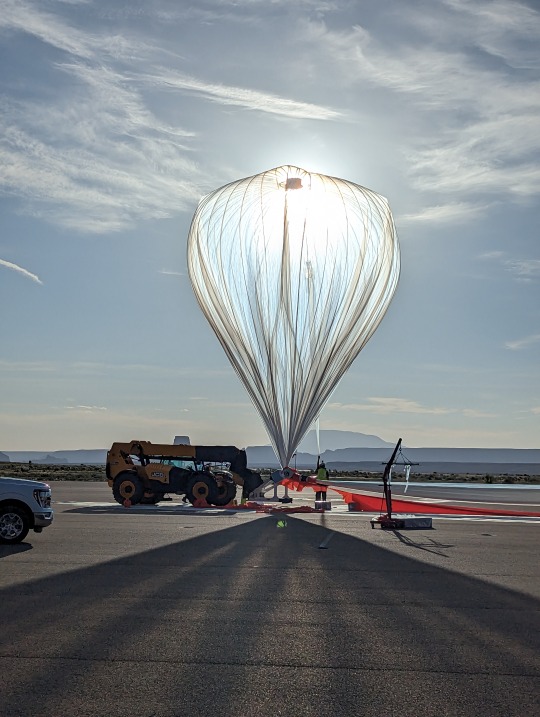

Here are four innovative TechRise experiments built by students and tested aboard NASA-supported flights this summer:
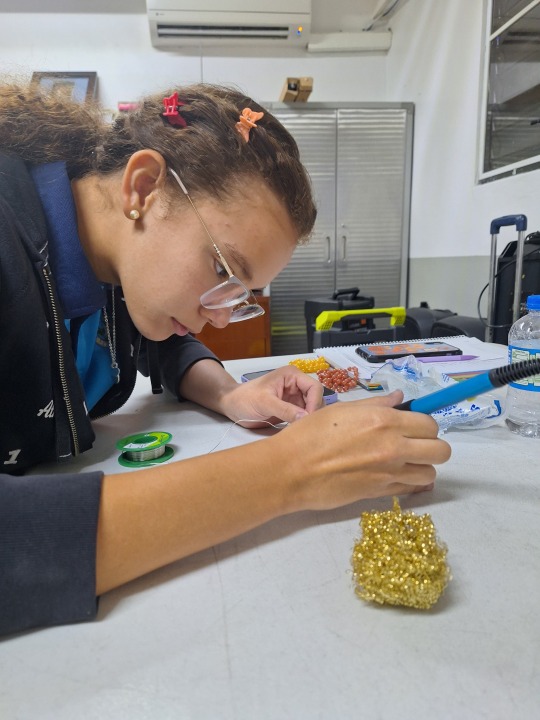
1. Oobleck Reaches the Skies
Oobleck, which gets its name from Dr. Seuss, is a mixture of cornstarch and water that behaves as both a liquid and a solid. Inspired by in-class science experiments, high school students at Colegio Otoqui in Bayomón, Puerto Rico, tested how Oobleck’s properties at 80,000 feet aboard a high-altitude balloon are different from those on Earth’s surface. Using sensors and the organic elements to create Oobleck, students aimed to collect data on the fluid under different conditions to determine if it could be used as a system for impact absorption.
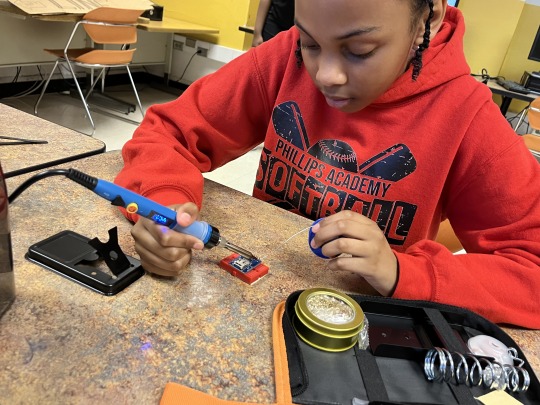
2. Terrestrial Magnetic Field
Middle school students at Phillips Academy International Baccalaureate School in Birmingham, Alabama, tested the Earth’s magnetic field strength during the ascent, float, and descent of the high-altitude balloon. The team hypothesized the magnetic field strength decreases as the distance from Earth’s surface increases.
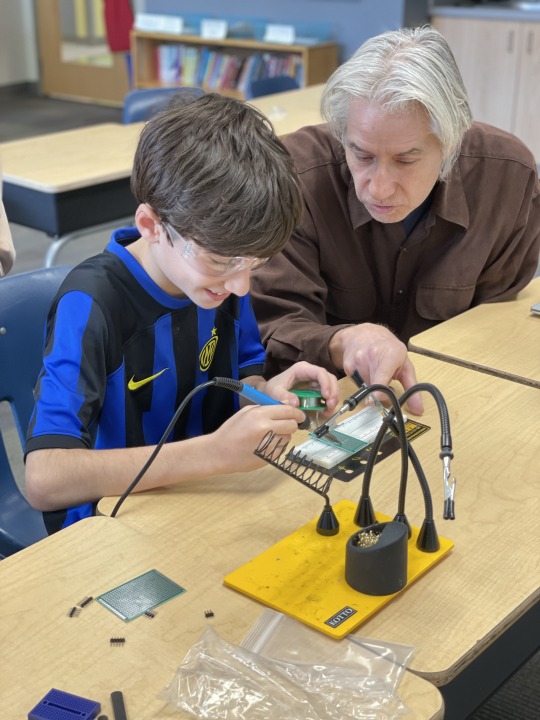
3. Rocket Lander Flame Experiment
To understand the impact of dust, rocks, and other materials kicked up by a rocket plume when landing on the Moon, middle school students at Cliff Valley School in Atlanta, Georgia, tested the vibrations of the Xodiac rocket-powered lander using CO2 and vibration sensors. The team also used infrared (thermal) and visual light cameras to attempt to detect the hazards produced by the rocket plume on the simulated lunar surface, which is important to ensure a safe landing.

4. Rocket Navigation
Middle and high school students at Tiospaye Topa School in LaPlant, South Dakota, developed an experiment to track motion data with the help of a GPS tracker and magnetic radar. Using data from the rocket-powered lander flight, the team will create a map of the flight path as well as the magnetic field of the terrain. The students plan to use their map to explore developing their own rocket navigation system.
youtube
The 2024-2025 TechRise Challenge is now accepting proposals for technology and science to be tested on a high-altitude balloon! Not only does TechRise offer hands-on experience in a live testing scenario, but it also provides an opportunity to learn about teamwork, project management, and other real-world skills.
“The TechRise Challenge was a truly remarkable journey for our team,” said Roshni Ismail, the team lead and educator at Cliff Valley School. “Watching them transform through the discovery of new skills, problem-solving together while being driven by the chance of flying their creation on a [rocket-powered lander] with NASA has been exhilarating. They challenged themselves to learn through trial and error and worked long hours to overcome every obstacle. We are very grateful for this opportunity.”
Are you ready to bring your experiment design to the launchpad? If you are a sixth to 12th grade student, you can make a team under the guidance of an educator and submit your experiment ideas by November 1. Get ready to create!
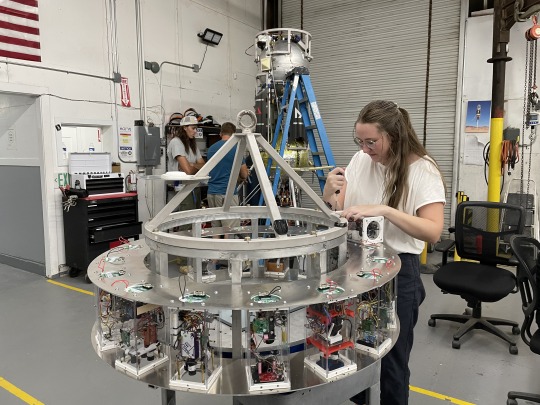
Make sure to follow us on Tumblr for your regular dose of space!
613 notes
·
View notes
Text
The reintroduction of wolves to Yellowstone National Park in the 1990s had a cascading effect that benefited the entire ecosystem, a new study finds. The finding shows how the return or loss of apex predators can affect every part of the food web. By the 1920s, gray wolves (Canis lupus) were no longer present in Yellowstone National Park and cougar (Puma concolor) populations were very low, as a result of government initiatives to control large predator populations. Rocky Mountain elk (Cervus canadensis) thrived without these predators, which in turn decimated some plant populations. The loss of some trees and shrubs then threatened beaver populations. This sequence of events is known as a trophic cascade — when the actions of top predators indirectly affect other species further down the food web, ultimately affecting the entire ecosystem.
[...]
The new study, published Jan. 14 in the journal Global Ecology and Conservation, used 20 years' worth of data, collected from 2001 to 2020, regarding willow shrubs (Salix) along streams in Yellowstone. The researchers looked at willow crown volume — the total space occupied by a shrubs' branches, stems and leaves. Measuring crown volume enabled the researchers to calculate the shrubs' overall biomass: the amount of organic material available at the plant level of the food web, and the energy that will be passed on through the food web when animals eat these plants. "Yellowstone's northern range is the perfect natural laboratory for studying these changes. It is one of the few places in the world where we can observe what happens when an apex predator guild, including wolves and cougars, is restored after a long absence," study first author William Ripple, an ecologist at Oregon State University, told Live Science in an email. "The lessons we learn here can apply to other ecosystems globally." The analysis found a 1,500% increase in willow crown volume along streams over the study period, demonstrating a major recovery of these shrubs. The study links this significant willow shrub recovery to a reduction in elk browsing, probably influenced by the return of predators to the region, which enabled willows to grow back in some areas. "One of the most striking results was just how strong the trophic cascade has been," Ripple said. "A 1,500% increase in willow crown volume is a big number. It is one of the strongest trophic cascade effects reported in the scientific literature."
25 February 2025
183 notes
·
View notes
Text
Is Data Science Really That Hard? A Beginner’s Roadmap to Mastery
In a world powered by algorithms, data, and decisions, data science has quickly become one of the most sought-after skills across industries. From predicting customer behavior to detecting fraud and automating systems, data science is transforming how we work and live. But for many beginners, a pressing question often stands in the way of getting started: “Is data science really that hard to…
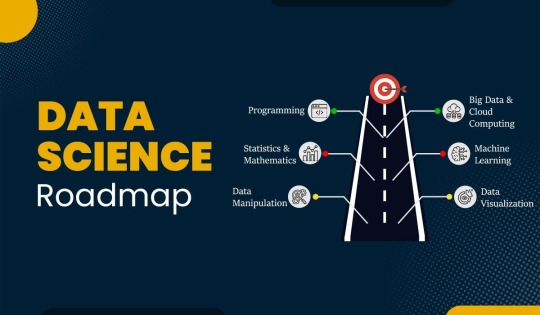
View On WordPress
#beginner guide to data science#best way to learn data science#career in data science#data science career guide#data science course tips#data science for beginners#data science learning path#data science roadmap 2025#data science skills#future of data science#how to learn data science#is data science difficult#learning data science step by step#mastering data science
0 notes
Text

nytimes.com/2025/07/13/opinion/family-politics-arguments-right-wing.html
Okay look I am 1000% in favor of not snubbing friends and family over political differences and I guess I'll applaud this guy for finally figuring out that it doesn't work but mostly I'm just amazed by how much continued arrogance can fit into a 1200 word op-ed about how you were wrong and also an asshole.
Full op-ed pasted below the cut
Not too long ago, I felt a civic duty to be rude to my wife’s younger brother.
I met Matt Kappler in 2012, and it was immediately clear we had nothing in common. He lifted weights to death metal; I jogged to Sondheim. I was one of President Barack Obama’s speechwriters and had an Ivy League degree; he was a huge Joe Rogan fan and went on to get his electrician’s license. My early memories of Matt are hazy — I was mostly trying to impress his parents. Still we got along, chatting amiably on holidays and at family events.
Then the pandemic hit, and our preferences began to feel like more than differences in taste. We were on opposite sides of a cultural civil war. The deepest divide was vaccination. I wasn’t shocked when Matt didn’t get the Covid shot. But I was baffled. Turning down a vaccine during a pandemic seemed like a rejection of science and self-preservation. It felt like he was tearing up the social contract that, until that point, I’d imagined we shared.
Had Matt been a friend rather than a family member, I probably would have cut off contact completely. As it was, on the rare and always outdoor occasions when we saw each other, I spoke in disapproving snippets.
“Work’s been good?”
“Mhrmm.”
My frostiness wasn’t personal. It was strategic. Being unfriendly to people who turned down the vaccine felt like the right thing to do. How else could we motivate them to mend their ways?
I wasn’t the only one thinking this. A 2021 essay for USA Today declared, “It’s time to start shunning the ‘vaccine hesitant.’” An L.A. Times piece went further, arguing that to create “teachable moments,” it may be necessary to mock some anti-vaxxers’ deaths.
Shunning as a form of accountability goes back millenniums. In ancient Athens, a citizen deemed a threat to state stability could be “ostracized” — cast out of society for a decade. For much of history, banishment was considered so severe that it substituted for capital punishment. The whole point of Hester Prynne’s scarlet letter was to show she had violated norms — and to discourage others from doing so.
But that was before social media. We live in a world of online fandoms, choose-your-own-adventure information and parasocial relationships. Few people who lost friends over the vaccine changed their minds. They just got new friends. Those exiled from one version of society were quickly welcomed by another — an alternate universe full of grievance peddlers and conspiracy theorists who thrived on stories of victimized conservatives.
There has been a sorting into belief camps, algorithmically and in real life. It dictates whom we match with on dating apps and where we live. We block those we disagree with online, we leave the group chat, we don’t show up for Thanksgiving. Recent data suggests that today, one in five Americans is estranged from a family member over politics. More points of deep disagreement will surely arise: over Trump’s immigration crackdown and use of the military in domestic affairs, over Robert F. Kennedy Jr.’s MAHA mandates, over antisemitism, over a megabill that takes health care from the poor while cutting taxes for the rich.
No one is required to spend time with people they don’t care for. But those of us who feel an obligation to shun strategically need to ask: What has all this banishing accomplished? It’s not just ineffective. It’s counterproductive.
These days, ostracism might just hurt the ostracizer more than the ostracizee.
I wish I could say I learned this through self-reflection and study. What actually happened is that I started surfing. After moving to the Jersey Shore in 2022, I signed up for lessons. Despite my advanced age of 35 and lack of natural talent, I got hooked. Matt was the only other surfer I knew. I put my principled unfriendliness aside.
From the moment we began paddling out together, I could tell my cold-shoulder strategy had backfired. I’d spent the peak of the pandemic in a cultural bubble, and he had done the same. Driving to a break or changing into our wet suits, he’d often express opinions — about the merits of vigilantism, or the health benefits of Mexican stem-cell injections — that I found slightly unhinged.
Where is this coming from? I wondered. The answer was nearly always “Joe Rogan’s podcast.”
I assumed our surf-buddy experiment would either fail spectacularly or bring Matt over to my side. Neither of those things occurred. Instead, the connections we found were tiny and unrelated to politics. We agree that “Shrimply Irresistible” is the perfect so-bad-it’s-good name for a seafood restaurant, and that Taylor Swift’s “Love Story” is a classic. Although I still wouldn’t call myself a Rogan fan, we share an appreciation for his interview with the surf legend Kelly Slater. Matt and I remain very different, yet we’ve reached what is, in today’s America, a radical conclusion: We don’t always approve of each other’s choices, but we like each other.
It helped that in the ocean, our places in the pecking order reversed. Matt’s a very good surfer — one might call him “an elite” — and I am not. According to surfing’s unwritten rules, he had the right to look down on me. But he never did. His generosity of spirit in the water made me rethink my own behavior on land.
Three years after my first surf lesson, Matt and I haven’t really changed each other’s minds on major national issues. But we have changed each other. His fearlessness in consequential surf made me more courageous. His ability to go “over the ledge,” launching himself off breaking lips, helped me curb my overthinking. Ostracizing him wouldn’t have altered his behavior — and it would have made my own life worse.
I suspect that’s true for Matt as well. While I’ve never asked if our friendship made him more open-minded — we’d find that embarrassing — I’m confident the answer is yes. Last year, when I briefly considered running for office, Matt said he’d vote for me. When I asked why, his answer had nothing to do with party or policy. “You’re a regular guy,” he told me. “You walk the dog.”
When I share stories about surfing with my brother-in-law, people often tell me about relationships in their own lives pushed to the brink by politics. Sometimes, they’re proud of ties they’ve severed. More often, they’re hoping for a way forward. How can we pierce bubbles of misinformation? Can friendships fractured in the Trump era be repaired?
My advice is always the same. Our differences are meaningful, but allowing them to mean everything is part of how we ended up here. When we cut off contacts, or let algorithms sort us into warring factions, we forget that not so long ago, we used to have things to talk about that didn’t involve politics. Shunning plays into the hands of demagogues, making it easier for them to divide us and even, in some cases, to incite violence.
There are, of course, some people so committed to odiousness that it defines them. If Stephen Miller wants a surf lesson, I’ll decline. But are most people like that? In an age when banishment backfires, keeping the door open to unlikely friendship isn’t a betrayal of principles — it’s an affirmation of them.
24 notes
·
View notes
Text
WHY IS MARS RED??
Blog#484
Saturday, March 1st, 2025.
Welcome back,
Mars has been a subject of fascination for humans due to its unique colour. Nicknamed the 'Red Planet' for its iconic rusty hue, the question is what exactly gives the planet its colour?
Scientists have learned from space orbiters and landers that the rust-coloured dust called ferrihydrite that covers the planet is what gives Mars its red hue, CNN reported. Similar to the process on Earth, when iron in the rocks interacted with water or water and oxygen in the atmosphere on Mars, it created iron oxide.
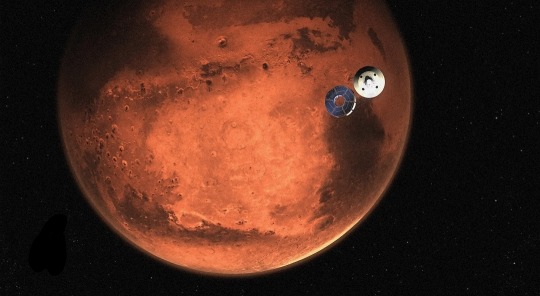
Martian winds, then, carried the iron oxide across Mars over billions of years, breaking it down into dust and giving the planet its signature colour.
Since Mars no longer has liquid water, scientists previously believed that its rust-red colour came from dry iron oxides like hematite in the dust. However, according to a new analysis of satellite data and laboratory procedures, ferrihydrite might be a better explanation for the planet's red colour.

"The fundamental question of why Mars is red has been pondered for hundreds, if not thousands, of years," said Adomas Valantinas, a lead author and a postdoctoral fellow in the Department of Earth, environmental and planetary sciences at Brown University, as per USA Today.
He added, "Mars is still the Red Planet. It's just that our understanding of why Mars is red has been transformed."
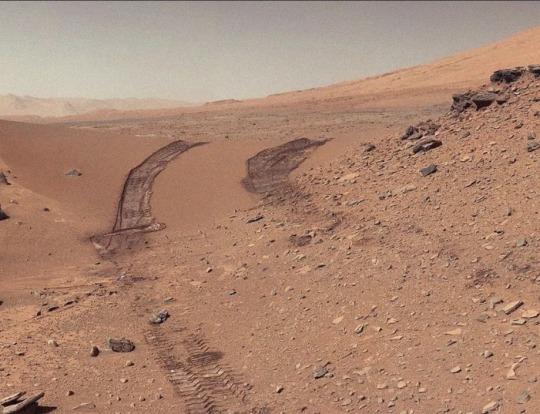
Ferrihydrite's identification as a major constituent of Martian dust may have significant implications for our knowledge of Mars' past and the potential for extraterrestrial life. According to Valantinas, ferrihydrite's existence on Mars indicates that the planet originally had a liquid water environment, which is essential for life.

Study co-author Jack Mustard said that the research offers a "door-opening opportunity". He emphasised that although the results were encouraging, they could only be verified with actual samples taken from Mars.
Originally published on https://www.ndtv.com
COMING UP!!
(Wednesday, March 5th, 2025)
"WHY IS NEBULA CALLED STELLAR NURSERY??"
#astronomy#outer space#alternate universe#astrophysics#universe#spacecraft#white universe#space#parallel universe#astrophotography
31 notes
·
View notes
Text
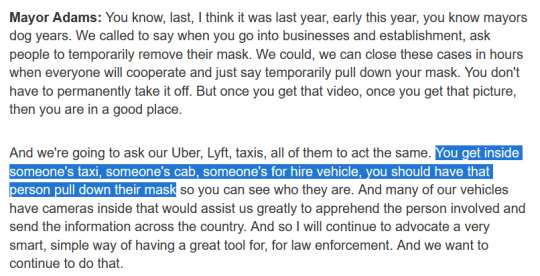
Text from https://www.nyc.gov/office-of-the-mayor/news/910-24/transcript-mayor-adams-holds-in-person-media-availability
Dear Mayor Adams,
No.
The entire point of masks — especially fitted respirators, i.e. N95s, which do not leave gaps around the face — is to protect the wearer from harmful airborne pathogens.
Let's break that down:
If : someone who is
A. visibly sick and carelessly spreading it everywhere (as many do), or
B. is unknowingly, asymptomatically shedding viral particles (also, as many do, because most people erroneously think it's over and generally take no precautions) was in that vehicle,
Then: there's a high likelihood they've left viral particles in the air.
It's really fucking simple:
AIRBORNE viral particles can LINGER IN THE AIR for hours.
That means the masked person getting into a vehicle — who doesn't want to / can't afford to get sick(er), even despite regular harassment and threats that Mayor Adams doesn't give a shit about — will not be safe to remove it inside.
Neither is it a good idea to try to enforce this based on mask type, force medical permits, etc. Others have written about this extensively. Unlike (effective) mandates, these bans are not based on science or data. E.g.:
First, addressing the claim that mask bans are necessary for facial recognition and societal safety, growing data shows that face masks are less effective than sunglasses in masking face identity. Another study claims “Convolutional Neural Networks are highly capable of learning features and accurately identifying the image, even when the only fully visible part of the face is the eyes.”
—

Those statements betray how out of touch this mayor is with the average person who actually walks NYC streets and takes public transit.
"This person" he refers to, as we all know, was not attacking random individuals. "This person" went after one specific man who had millions of dollars worth of blood on his hands:
"For people who do not have money or social connections at hospitals or the ability to spend weeks at a time on the phone, a denied health-insurance claim can instantly bend the trajectory of a life toward bankruptcy and misery and death."
—
Adams et. al., driving their private cars on sidewalks, don't care if regular, vulnerable people are endangered daily by everyone who chooses entitlement, selfishness, or just plain willful ignorance.
—
New Yorkers, the next mayoral election is in 2025:
Until then, contact NY officials:
Even if they are already for / against an issue, it still makes a difference to tell them (source: they and volunteers for these offices say so themselves).
If you have the spoons, please help. If you're able to call, do that. People who are disabled, chronically ill, etc. have to do so much of this lifting alone while they're already exhausted.
38 notes
·
View notes
Text
Shorebird populations across the Americas have declined by nearly 50% over the past four decades, facing increasing threats from habitat loss, climate change, and human disturbances. Against these odds, the American Oystercatcher has made a stunning comeback, with populations rebounding by 45% since 2008. The recovery is credited to a collaborative, science-based conservation initiative led by Manomet Conservation Sciences, in partnership with the National Fish and Wildlife Foundation and the U.S. Fish and Wildlife Service.
The American Oystercatcher, a striking coastal bird known for its bright red-orange beak and distinctive yellow-rimmed eyes, plays a vital role in salt marsh and barrier beach ecosystems. By 2008, its numbers had dropped to just 10,000 birds. Recognizing the urgency of the situation, Dr. Shiloh Schulte, Senior Shorebird Scientist at Manomet, launched a data-driven conservation effort focused on habitat restoration, predator control, and protection of nesting sites.
Schulte’s comprehensive population surveys—spanning from New York to Texas—provided critical insights into roosting patterns and breeding success, enabling conservationists to implement effective recovery strategies. Targeted interventions and sustained collaboration have reversed the species’ decline, offering a model for future shorebird conservation efforts.
A $10 Million Investment in Coastal Conservation
Recognizing that shorebird conservation requires a coordinated, large-scale approach, Manomet and the American Oystercatcher Working Group spearheaded a decade-long $10 million funding initiative bringing together 35 coastal conservation organizations.
The combined efforts have contributed to the restoration of coastal ecosystems, benefiting numerous shorebird species. According to Dr. Stephen Brown, Vice President of Science at Manomet, long-term migration studies have played a role in highlighting the broader shorebird crisis. His research contributed to the November 2024 update of the International Union for Conservation of Nature’s (IUCN) Red List, which revealed that 15 migratory shorebird species in the Americas are now classified at higher risk levels.
Manomet’s ongoing mission extends beyond research, actively engaging local communities, conservation organizations, and policymakers to implement science-based solutions. By prioritizing hands-on habitat restoration and protection, the organization remains at the forefront of shorebird conservation efforts.
Expanding Conservation Efforts: From Oystercatchers to Whimbrels
The success of the American Oystercatcher conservation model is now being applied to other threatened shorebirds, including the whimbrel—a long-distance migratory bird that travels between the Arctic and South America. With whimbrel populations declining in recent decades, conservationists are using the same science-driven strategies to help reverse these trends.
To increase public awareness and engagement, the First Inaugural Shorebird Festival will take place on Tybee Island, Georgia, from February 20-22, 2025. This event will bring together citizen scientists, conservationists, and bird enthusiasts, providing a unique opportunity to learn about shorebird conservation efforts. Dr. Abby Sterling, Director of the Georgia Bight Shorebird Conservation Initiative, will be among the experts discussing ongoing restoration initiatives.
Despite ongoing environmental challenges, the resurgence of the American Oystercatcher proves that with the right scientific approach, funding, and collaboration, shorebird populations can recover and thrive.
#good news#environmentalism#usa#oystercatcher#birds#seabirds#science#environment#nature#animals#conservation#ecosystems#american oystercatcher#animal welfare#animal protection#animal conservation
41 notes
·
View notes
Text
Summer 2025 Game Development Student Internship Roundup, Part 2
Internship recruiting season has begun for some large game publishers and developers. This means that a number of internship opportunities for summer 2025 have been posted and will be collecting applicants. Internships are a great way to earn some experience in a professional environment and to get mentorship from those of us in the trenches. If you’re a student and you have an interest in game development as a career, you should absolutely look into these.
This is part 2 of this year's internship roundup. [Click here for part 1].

Associate Development Manager Co-op/Internship - Summer 2025 (Sports FC QV)
Game Product Manager Intern (Summer 2025)
Music Intern
EA Sports FC Franchise Activation Intern
Associate Character Artist Intern
Client Engineer Intern
Visual Effects Co-Op
Associate Environment Artist Co-Op (Summer 2025)
Game Design Intern (Summer 2025)
Game Design Co-Op (Summer 2025)
Concept Art Intern - Summer 2025
UI Artist Intern - Summer 2025 (Apex Legends)
Assistant Development Manager Intern
Global Audit Intern
Creator Partnerships Intern - Summer 2025
Technical Environment Art Intern - Summer 2025 (Apex Legends)
Intern, FC Franchise Activation, UKI
Tech Art Intern - Summer 2025 (Apex Legends)
Software Engineer Intern
UI Artist Intern
Game Designer Intern
FC Franchise Activation Intern
Software Engineer Intern
Product UX/UI Designer
Software Engineer Intern
Enterprise, Experiences FP&A Intern
Game Designer Intern
Software Engineer Intern
Development Manager Co-Op (Summer 2025)
Software Engineer Intern
PhD Software Engineer Intern
Character Artist Intern
2D Artist Intern - Summer 2025
Software Engineer Intern (UI)
Entertainment FP&A Intern
Game Design Co-Op (Summer 2025)
Data Science Intern
Production Manager Intern
Software Engineer Intern
Channel Delivery Intern
FC Pro League Operations Intern
World Artist Intern
Experience Design Co-Op
Media and Lifecycle Planning Intern
Software Engineer Intern - Summer 2025
Software Engineer Intern - Summer 2025
Intern, FC Franchise Activation, North America
Creative Copywriter Intern
Game Design Intern
Social Community Manager Co-Op
Business Intelligence Intern
Software Engineer Intern (F1)
Total Rewards Intern - MBA level

Intern - Office Administration
Digital Communication Assistant – Internship (6 months) february/march 2025 (W/M/NB)
International Events Assistant - Stage (6 mois) Janvier 2025 (H/F/NB)
Intern Cinematic Animator
Research Internship (F/M/NB) - Neural Textures for Complex Materials - La Forge
Research Internship (F/M/NB) - Efficient Neural Representation of Large-Scale Environments - La Forge
Research Internship (F/M/NB) – High-Dimensional Inputs for RL agents in Dynamic Video Games Environments - La Forge
Research Internship (F/M/NB) – Crafting NPCs & Bots behaviors with LLM/VLM - La Forge
3D Art Intern
Gameplay Programmer Intern
Intern Game Tester
Etudes Stratégiques Marketing – Stage (6 mois) Janvier 2025 (F/H/NB)
Localization Assistant– Stage (6 mois) Avril 2025 (F/H/NB)
Fraud & Analyst Assistant - Stage (6 mois) Janvier 2025 (F/H/NB)
Payment & Analyst Assistant - Stage (6 mois) Janvier 2025 (F/H/NB)
Media Assistant – Stage (6 mois) Janvier 2025 (F/H/NB)
IT Buyer Assistant - Alternance (12 mois) Mars 2025 (H/F/NB)
Event Coordinator Assistant - Stage (6 mois) Janvier 2025 (H/F/NB)
Communication & PR Assistant - Stage (6 mois) Janvier 2025 (F/H/NB)
Brand Manager Assistant - MARKETING DAY - Stage (6 mois) Janvier 2025 (F/N/NB)
Manufacturing Planning & Products Development Assistant - Stage (6 mois) Janvier 2025 (H/F/NB)
Retail Analyst & Sales Administration Assistant - Stage (6 mois) Janvier 2025 (H/F/NB)
UI Designer Assistant - Stage (6 mois) Janvier 2025 (F/M/NB)
Esports Communication Assistant
Machine Learning Engineer Assistant – Stage (6 mois) Janvier/Mars 2025 (F/H/NB)
Social Media Assistant – Stage (6 mois) Janvier 2025 (F/H/NB)
36 notes
·
View notes